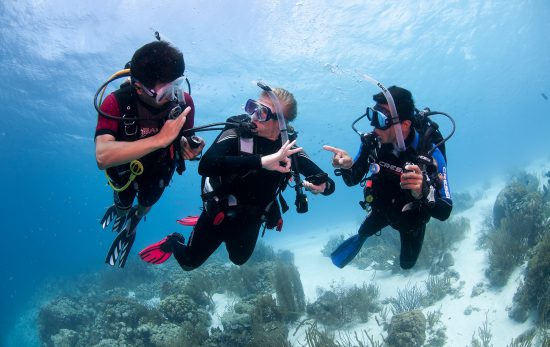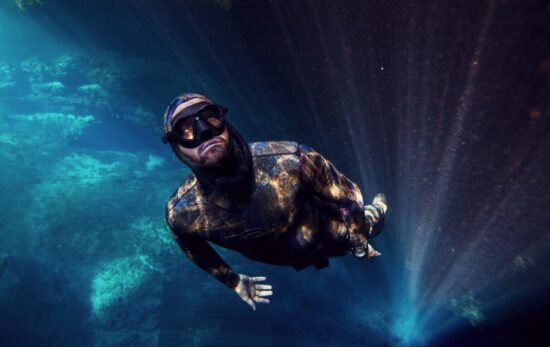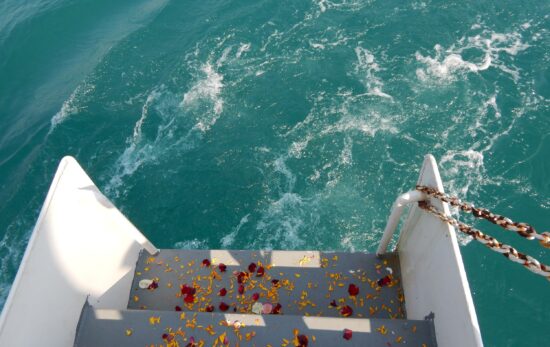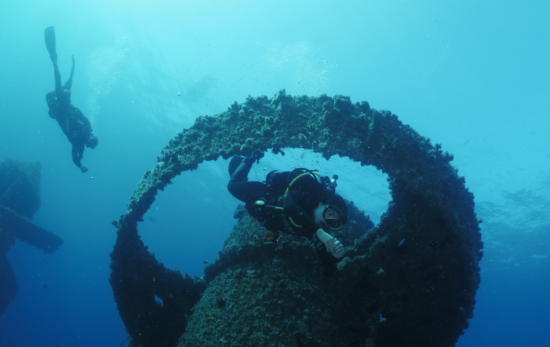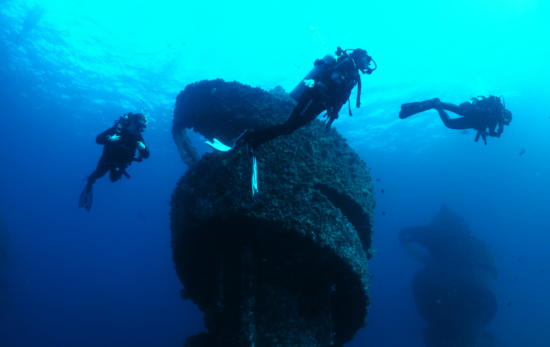The logistics involved in installing the world’s first purpose-built floating reef were challenging, but today, Australia’s Wonder Reef is open for scuba divers to explore.
Awe, fascination, amazement and astonishment are all synonyms for the word “wonder,” and as you dive Wonder Reef, they are all words that come to mind as you weave in and out of the nine structures that comprise the world’s first purpose-built floating reef Australia’s Gold Coast. Already, the reef has attracted dozens of marine species, including Queensland grouper, gold-spotted rockcod, crayfish, octopuses, clownfish and nudibranchs — and, of course, scuba divers. The story behind how an artificial reef this massive — the entire structure rises 72 feet/22 meters from the seafloor and has created 1,130,069 cubic feet/32,000 cubic meters of reef habitat — was installed in the ocean is a testament to the creativity, expertise and vision of all its stakeholders. The project — which took 10 years from inspired vision to final installation — required input from the local commercial and recreational dive industry, tourism industry, statutory authorities, marine scientists, boating and fishing organizations, marine rescue and the local cultural heritage body.
After months of conceiving, designing and creating the Wonder Reef structures, the day finally arrived in August 2021 for the reef to be installed in the ocean (the site was officially opened to divers on June 3, 2022). It was no small undertaking. Each of the nine floating “flute” structures that comprise the reef weighs 846 tonnes — 1.8 million pounds — in air. Each reef foundation weighs 159,000 pounds/72 tonnes. Roughly 2,200 pounds/1 tonne of chain, shackles and swivels connect each floating flute to a foundation reef.
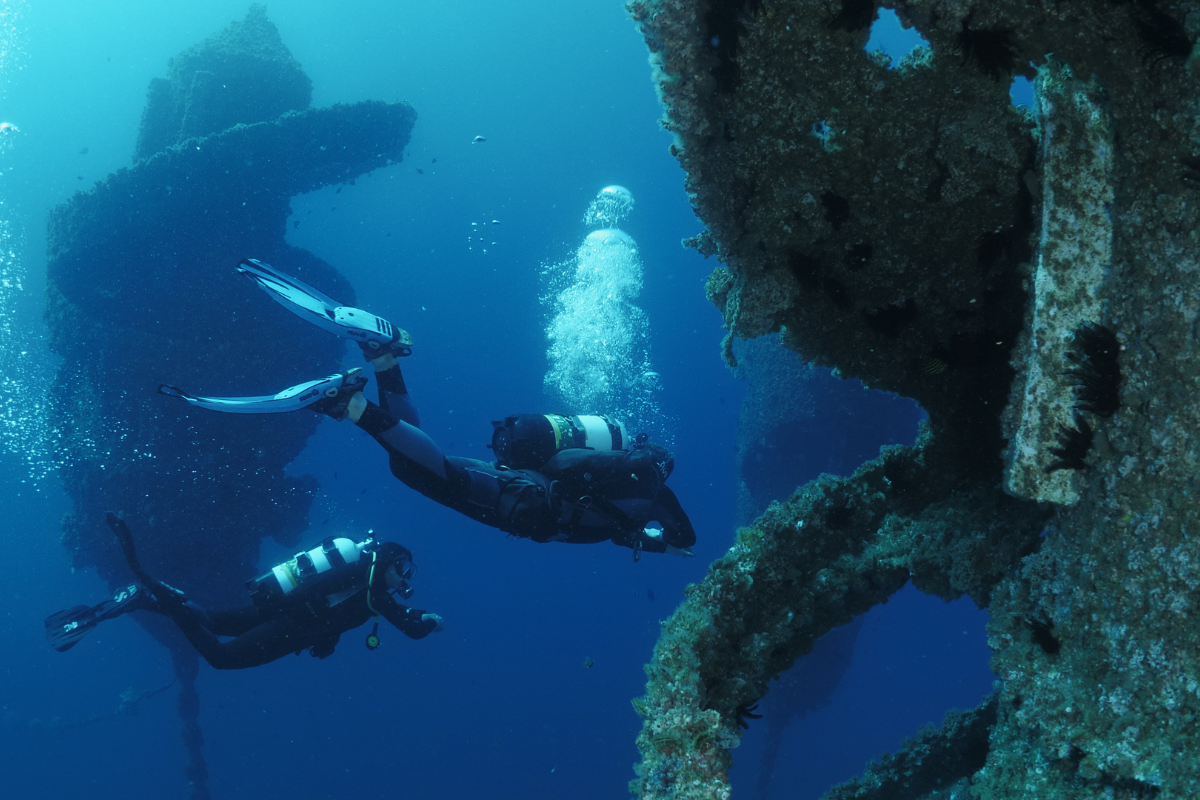
Once Queensland-based ISM Manufacturing fabricated the steel components of the reef, 14 trucks transported the massive structure to Brisbane, where it was loaded onto East Coast Maritime’s 180-foot/54.9-meter Crest 181 barge, where workers could complete the final steps in assembling it, including connecting the flutes to the foundations. The 52-foot/16-meter tug HT Salute was used to tow the barge to its final site, 2.5 kilometers off the Gold Coast’s Southport Spit.
Australia’s largest floating crane — the St. Vincent — and an 8-person crew were used by marine construction specialists Foreshore Marine to lower the structures into the ocean 1.5 miles/2.5 kilometers off the Gold Coast’s Southport Spit.
“Weather was the primary concern, given that the installation site is very exposed off the Gold Coast,” said Jason Hodgson, a marine installer with Foreshore Marine. “The weather window was critical to the success and safety of the installation.”
After installation, Wonder Reef was monitored for 10 months. The Gold Coast experienced some weather events that held up some of the schedules, but all studies and reports met all criteria, approvals and diver safety in preparation for the official launch in June 2022.
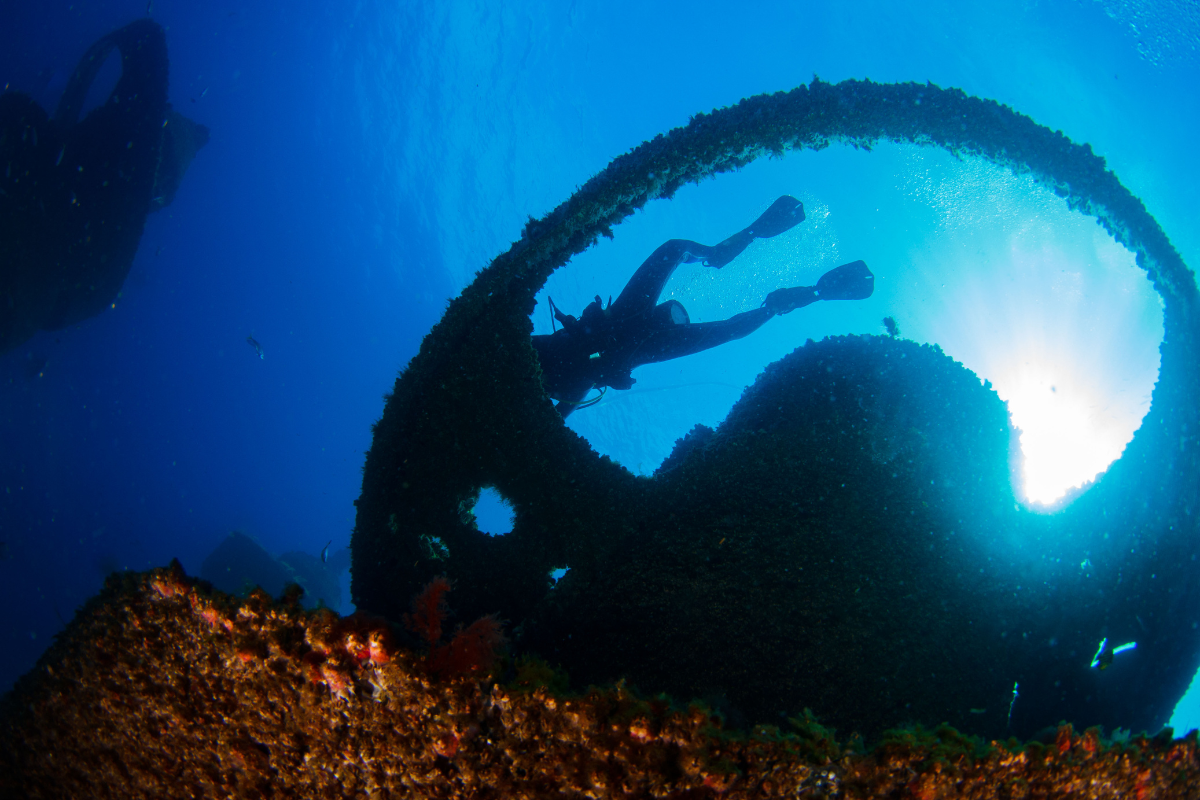
The Newest Attraction in the Gold Coast Dive Trail
The reef is the most recent addition to the Gold Coast Dive Trail, a series of 11 diverse dive sites between South Stradbroke Island and just south of Snapper Rocks. The sites include the Scottish Prince wreck (with whiskey bottles still on board!), the former fishing trawler Aquarian wreck, and natural reefs such as Palm Beach, Kirra and Nine Mile. Divers can explore the wrecks, rocky reefs and bommies to find nurse sharks, moray eels, turtles, and soft and hard corals. Wonder Reef was intentionally located on a previously barren seabed and has already added to the site’s marine biodiversity.
“It’s one of those locations where it’s a wonder all around. You see the city in the background, you see the beach, you see the surf,” said City of Gold Coast Mayor Tom Tate, who was certified as a diver so that he could participate in the underwater ribbon cutting when the reef was installed. “When you look the other way, you see nothing — just the horizon. And then you dive down and you see all the wonder of marine life.”
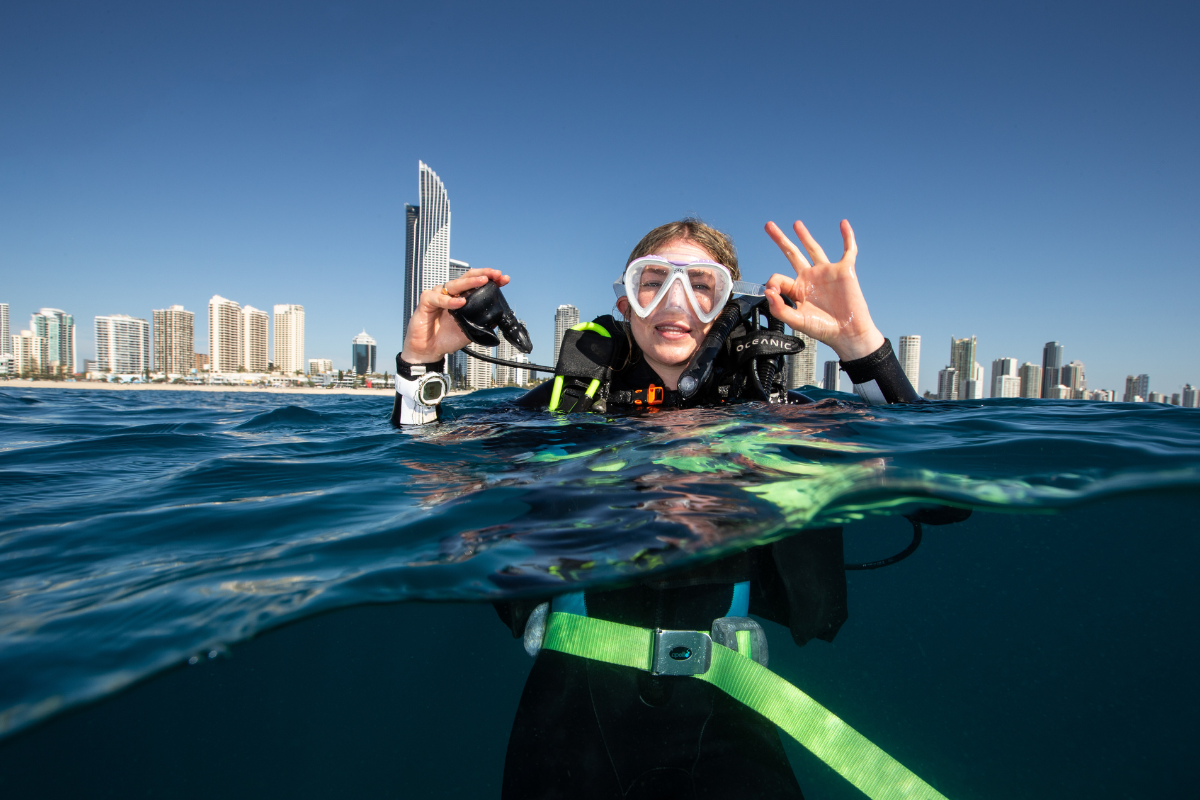
It’s a Wonderful Dive Experience
The reef structures move like a kelp forest, so the reef flutes sway and twirl when waves roll over them. In heavier wave action, the flutes are designed to lay nearly flat and then stand vertical once the waves subside. “It’s not just about the art; the sculptures themselves are living sculptures,” said Matthew Allen, founder of Subcon Blue Solutions, a team of global reef experts who helped bring the vision of Wonder Reef to life.
“On diveable days, when the swell is under 4 feet/1.5 meters, you won’t actually perceive them moving at all,” said Daniel Templeman, the large-scale sculptural artist who worked with Subcon Blue Solutions and the City of Gold Coast to design the reef. “The movement is what oxygenates the algae and provides nutrients to the corals, which in turn attracts sea life to feed from them, so the sculptures become symbiotic with the ocean.”
To help kickstart the marine growth, corals from Palm Beach reef were used to help propagate growth on Wonder Reef. The coral planting was undertaken by Townsville-based coral reef science experts Reef Ecologic, in collaboration with Subcon Blue Solutions. Reef experts managed to collect and transplant over 150 coral colonies onto four of the reef flutes using a variety of methods and ecological reports say the site is thriving.
The outcome is an underwater installation that reflects the Gold Coast’s natural beauty and helps raise the profile of the region as a premier dive destination.
“We have always been known as ‘surfer’s paradise,’ and now we’ll also be known as ‘diver’s paradise,’’’ Gold Coast Mayor Tom Tate said.
The reef is expected to boost tourism revenue and provide jobs for locals.
Regular dive tours are operated by Gold Coast Dive Adventures and the Queensland Scuba Diving Company or you can dive it yourself with a buddy and a permit to use the public mooring. There has never been a better time to discover diving on the Gold Coast!
